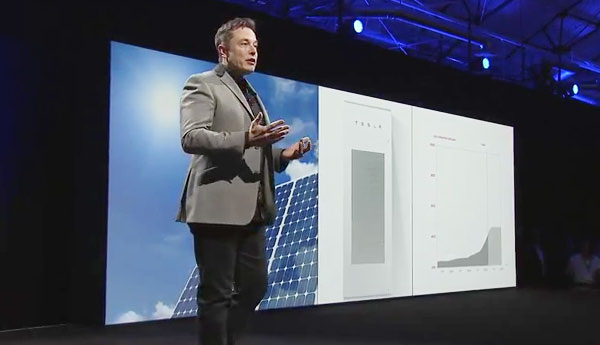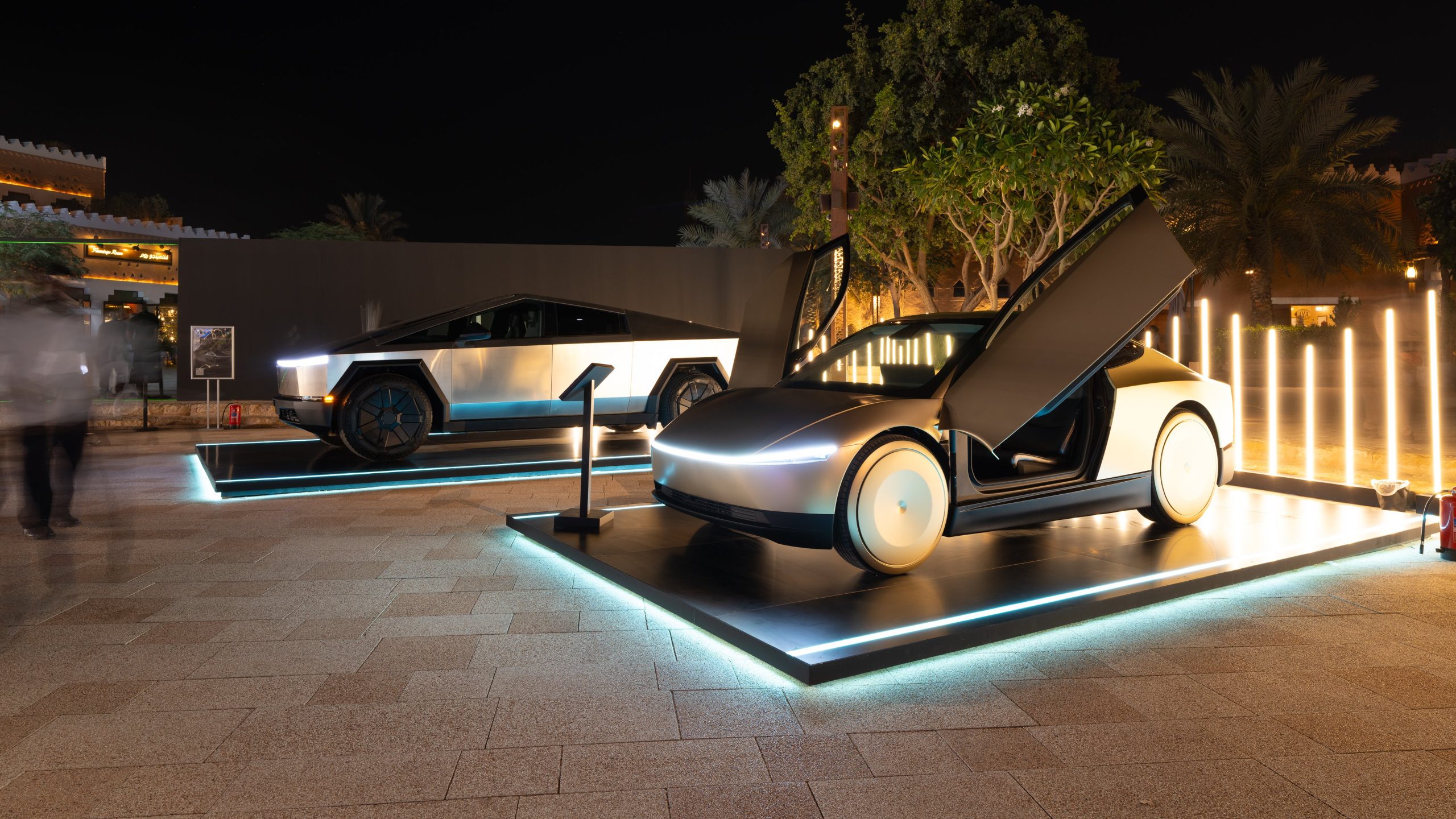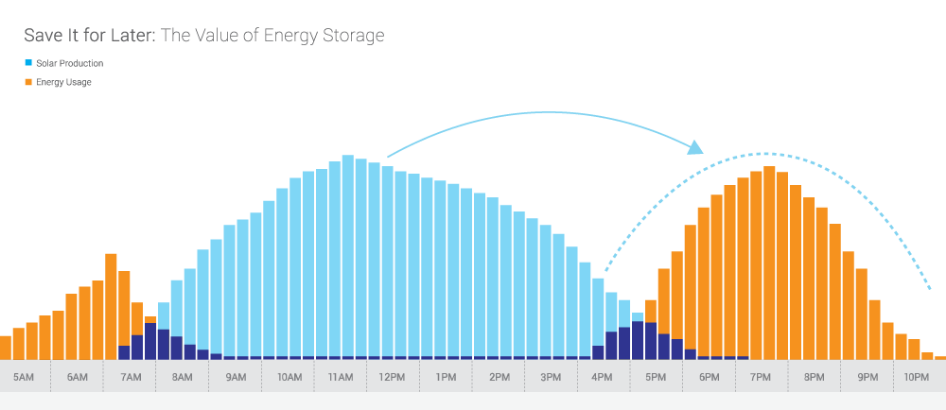Investor's Corner
Elon Musk makes a rare appearance on SolarCity’s Q2 conference call

SolarCity reported its Q2 quarterly results on Tuesday August 9, 2016, but unlike calls from the past where CEO Lyndon Rive’s provides a financial outlook for the nation’s largest full-service solar provider, Tesla CEO and SolarCity Chairman Elon Musk took stage to discuss future plans for the company. This marks a rare occasion for Musk and arrives at a time when discussions for the impending merger between Tesla and SolarCity is the hot topic among shareholders and analysts.
SolarCity provided shareholders with a Q2 2016 Shareholder Letter and accompanying Slide Presentation. While there might be little interest in the earnings report for Tesla owners and fans, quite a few interesting tidbits were provided during the afternoon SolarCity Analysts conference call by Musk.
Tesla Acquisition
Philip Lee-Wei Shen of ROTH Capital Partners asked why “the final deal and offer price was actually lower than the original price.”
Elon responded that “this is a negotiation of the independent board members. I actually wasn’t part of – and part of it was simply what they came up after, I think, a quite exhaustive discussion that lasted a week or two. So I’ve not inquired about the details and I’m not privy to the details, but it was ultimately what they concluded was fair between the independent board members of SolarCity and the board members of Tesla. Obviously, this is now up to the shareholder votes, independent shareholder votes where, I would say, I’m recusing myself. I’m not legally obligated to recuse myself, I’m just doing so, because I think it’s morally the right thing to do and so is Lyndon and Pete and JB Straubel.”
A new Product: Solar Roof
SolarCity is going to enter the “solar roof” market.
“We’re going to be making a pretty interesting product and I’m excited to kind of reveal to you all at some point, but it is not just your typical module, it is both very efficient and it looks really, really good,” said Peter Rive (CTO).
Elon elaborated that “It’s a solar roof as opposed to a module on a roof. I think, this is really a fundamental part of achieving a differentiated product strategy – it’s not a beautiful roof, that it is a solar roof, it’s not a thing on a roof, it is the roof. That’s – which is quite a difficult engineering challenge, and not something that is available really anywhere else that is at all good. I think this will be something that’s quite a standout. So one of the things I’m really very excited about the future.”
“It’s just addressing a really big market segment, so just in the U.S., there is 5 million new roofs installed every year,” said Lyndon Rive (CEO).
“The interesting thing about this is that it actually doesn’t cannibalize the existing product of putting solar on roof, because essentially if your roof is nearing end-of-life, you definitely don’t want to put solar panels on it, because you’re going to have to replace the roof,” said Elon Musk (Chairman). “So, there is a huge market segment that is currently inaccessible to SolarCity, because people know they’re going to have to replace their roof, you don’t want to put solar panels on top of a roof you’re going to replace. However, if you are close – if your roof is nearing end-of-life, well, you’ve got to get a new roof anyway, there’s 5 million new roofs a year just in the U.S. And so, why not have a solar roof that’s better in many others ways as well. We don’t want to show all of our cards right now, but I think people are going to be really excited about what they see.”
Notice that roof solar is a business where there are players already: Luma Resources, CertainTeed and Integrated Solar Technology, in particular and one that DOW Chemical just exited.
The solar roof product will be manufactured in Buffalo, NY. Elon added that “it’s really important to manufacturing in-house because its panels control the aesthetics and ideally really design – it’s kind of like making a custom car, like when somebody orders a car from Tesla, they’ll pick a wide array of options, that car will be custom made to their preferences, and you really want the roof custom-made to the individual customer as a kit and then sent to, that will be, the delivery team to get installed.”
Home Energy Management
Colin Rusch of Oppenheimer inquired “how long is it going to be before the combined entity [Tesla Motors + SolarCity] introduces a home energy management system or some sort of robust energy efficiency offering?”
To which Elon joked that “solar and battery go together like peanut butter and jelly. You obviously need the battery, particularly as you get to scale and you want to have solar be a bigger and bigger percentage of the grid. If you don’t have the batteries there to balance the grid and buffer the power, you really can’t go beyond a certain percentage of solar in a particular neighborhood. Maybe you can go up to about 20% solar, but more than that, it starts to unbalance the grid and you need to buffer it, because the energy generation is low at dawn and dusk, it’s high in middle of the day, and it’s at zero during at night. So you got to smooth that out.”
Elon reiterated the usual “sustainable energy” mantra he has been preaching for a decade: “if you like sort of fast forward to where do we want the world eventually to be is want the world to have a sustainable energy generation, a sustainable energy consumption, so that it really requires the three critical ingredients for that, there is the solar panels, the stationary batteries, and electric vehicles.”
Who is going to Win? Rooftop or centralized generation?
“You’ll have millions of these batteries, you’ve got to manage that and integrate it with the utility,” said Elon. “I do want to emphasize, there’s still a very important role for utilities here, sometimes people think that this is an either/or thing, it’s like either rooftops are going to win or centralized generation is going to win and actually both are going to win, because the electricity usage is going to increase dramatically as we transition away from burning old dinosaurs to electric cars, and then to electric transport, we would see roughly a doubling of electricity consumption as all transport moves to electric. And then, there is a tripling of electricity usage if you take all heating and make that electric as well, because obviously most heating is from oil and natural gas particularly.”
Combining battery and rooftop solar
Gordon Johnson of Axiom Capital Management inquired what was the rationale behind the acquisition [of SolarCity by Tesla] when “combining a battery and a rooftop solar company didn’t make a ton of sense because when you have a rooftop solar company with net metering, the grid acts as, effectively, a battery, ruling out the need for a battery technology.”
“Where we see net metering evolving over the next few years, I think this is a really important part of how storage is a combination with the solar,” answered Peter Rive (CTO). “A case that I’d like everybody to review is what just recently happened in New York. This is a collaboration of the local utilities and the solar industry. And the collaboration is net metering for the next three years and then a phasing to more of a grid services model, where you combine solar, storage, smart inverters and provide all these additional grid services, and you phase that in and then essentially you phase-out net metering into that grid services model.”
Peter concluded that “we see that probably happening as a standard policy and we’re going to promote that across all the different states. But you – we have to get to a point where it is the grid services, so that, actually it recognizes the value that solar and storage can provide you to grid.”
I think Peter Rive indeed sees the writing on the wall for “net metering” as being phased out over time. Net metering has disappeared already from states like Nevada, and while it has been retained in California, at least until 2019, all local utilities are switching gradually to TOD (Time-of-Day) billing (the “grid services” model Peter references above), where a “smart battery storage” product that provides “time-shifting” will solve the solar basic dilemma: while solar production peaks during midday, energy consumption is highest in the morning and evening. With storage, you can save the energy you produce for when you need it most, and at the same time you limit the output to the grid, a benefit to the local utility.

Investor's Corner
SpaceX IPO is coming, CEO Elon Musk confirms
However, it appears Musk is ready for SpaceX to go public, as Ars Technica Senior Space Editor Eric Berger wrote an op-ed that indicated he thought SpaceX would go public soon. Musk replied, basically confirming it.

Elon Musk confirmed through a post on X that a SpaceX initial public offering (IPO) is on the way after hinting at it several times earlier this year.
It also comes one day after Bloomberg reported that SpaceX was aiming for a valuation of $1.5 trillion, adding that it wanted to raise $30 billion.
Musk has been transparent for most of the year that he wanted to try to figure out a way to get Tesla shareholders to invest in SpaceX, giving them access to the stock.
He has also recognized the issues of having a public stock, like litigation exposure, quarterly reporting pressures, and other inconveniences.
However, it appears Musk is ready for SpaceX to go public, as Ars Technica Senior Space Editor Eric Berger wrote an op-ed that indicated he thought SpaceX would go public soon.
Musk replied, basically confirming it:
As usual, Eric is accurate
— Elon Musk (@elonmusk) December 10, 2025
Berger believes the IPO would help support the need for $30 billion or more in capital needed to fund AI integration projects, such as space-based data centers and lunar satellite factories. Musk confirmed recently that SpaceX “will be doing” data centers in orbit.
AI appears to be a “key part” of SpaceX getting to Musk, Berger also wrote. When writing about whether or not Optimus is a viable project and product for the company, he says that none of that matters. Musk thinks it is, and that’s all that matters.
It seems like Musk has certainly mulled something this big for a very long time, and the idea of taking SpaceX public is not just likely; it is necessary for the company to get to Mars.
The details of when SpaceX will finally hit that public status are not known. Many of the reports that came out over the past few days indicate it would happen in 2026, so sooner rather than later.
But there are a lot of things on Musk’s plate early next year, especially with Cybercab production, the potential launch of Unsupervised Full Self-Driving, and the Roadster unveiling, all planned for Q1.
Investor's Corner
Tesla Full Self-Driving statistic impresses Wall Street firm: ‘Very close to unsupervised’
The data shows there was a significant jump in miles traveled between interventions as Tesla transitioned drivers to v14.1 back in October. The FSD Community Tracker saw a jump from 441 miles to over 9,200 miles, the most significant improvement in four years.

Tesla Full Self-Driving performance and statistics continue to impress everyone, from retail investors to Wall Street firms. However, one analyst believes Tesla’s driving suite is “very close” to achieving unsupervised self-driving.
On Tuesday, Piper Sandler analyst Alexander Potter said that Tesla’s recent launch of Full Self-Driving version 14 increased the number of miles traveled between interventions by a drastic margin, based on data compiled by a Full Self-Driving Community Tracker.
🚨 Piper Sandler reiterated its Overweight rating and $500 PT on Tesla $TSLA stock
Analyst Alexander Potter said FSD is near full autonomy and latest versions showed the largest improvement in disengagements, from 440 miles to 9,200 miles between critical interventions pic.twitter.com/u4WCLfZcA9
— TESLARATI (@Teslarati) December 9, 2025
The data shows there was a significant jump in miles traveled between interventions as Tesla transitioned drivers to v14.1 back in October. The FSD Community Tracker saw a jump from 441 miles to over 9,200 miles, the most significant improvement in four years.
Interestingly, there was a slight dip in the miles traveled between interventions with the release of v14.2. Piper Sandler said investor interest in FSD has increased.
Full Self-Driving has displayed several improvements with v14, including the introduction of Arrival Options that allow specific parking situations to be chosen by the driver prior to arriving at the destination. Owners can choose from Street Parking, Parking Garages, Parking Lots, Chargers, and Driveways.
Additionally, the overall improvements in performance from v13 have been evident through smoother operation, fewer mistakes during routine operation, and a more refined decision-making process.
Early versions of v14 exhibited stuttering and brake stabbing, but Tesla did a great job of confronting the issue and eliminating it altogether with the release of v14.2.
Tesla CEO Elon Musk also recently stated that the current v14.2 FSD suite is also less restrictive with drivers looking at their phones, which has caused some controversy within the community.
Although we tested it and found there were fewer nudges by the driver monitoring system to push eyes back to the road, we still would not recommend it due to laws and regulations.
Tesla Full Self-Driving v14.2.1 texting and driving: we tested it
With that being said, FSD is improving significantly with each larger rollout, and Musk believes the final piece of the puzzle will be unveiled with FSD v14.3, which could come later this year or early in 2026.
Piper Sandler reaffirmed its $500 price target on Tesla shares, as well as its ‘Overweight’ rating.
Investor's Corner
Tesla gets price target boost, but it’s not all sunshine and rainbows

Tesla received a price target boost from Morgan Stanley, according to a new note on Monday morning, but there is some considerable caution also being communicated over the next year or so.
Morgan Stanley analyst Andrew Percoco took over Tesla coverage for the firm from longtime bull Adam Jonas, who appears to be focusing on embodied AI stocks and no longer automotive.
Percoco took over and immediately adjusted the price target for Tesla from $410 to $425, and changed its rating on shares from ‘Overweight’ to ‘Equal Weight.’
Percoco said he believes Tesla is the leading company in terms of electric vehicles, manufacturing, renewable energy, and real-world AI, so it deserves a premium valuation. However, he admits the high expectations for the company could provide for a “choppy trading environment” for the next year.
He wrote:
“However, high expectations on the latter have brought the stock closer to fair valuation. While it is well understood that Tesla is more than an auto manufacturer, we expect a choppy trading environment for the TSLA shares over the next 12 months, as we see downside to estimates, while the catalysts for its non-auto businesses appear priced at current levels.”
Percoco also added that if market cap hurdles are achieved, Morgan Stanley would reduce its price target by 7 percent.
Perhaps the biggest change with Percoco taking over the analysis for Jonas is how he will determine the value of each individual project. For example, he believes Optimus is worth about $60 per share of equity value.
He went on to describe the potential value of Full Self-Driving, highlighting its importance to the Tesla valuation:
“Full Self Driving (FSD) is the crown jewel of Tesla’s auto business; we believe that its leading-edge personal autonomous driving offering is a real game changer, and will remain a significant competitive advantage over its EV and non-EV peers. As Tesla continues to improve its platform with increased levels of autonomy (i.e., hands-off, eyes-off), it will revolutionize the personal driving experience. It remains to be seen if others will be able to keep pace.”
Additionally, Percoco outlined both bear and bull cases for the stock. He believes $860 per share, “which could be in play in the next 12 months if Tesla manages through the EV-downturn,” while also scaling Robotaxi, executing on unsupervised FSD, and scaling Optimus, is in play for the bull case.
Will Tesla thrive without the EV tax credit? Five reasons why they might
Meanwhile, the bear case is placed at $145 per share, and “assumes greater competition and margin pressure across all business lines, embedding zero value for humanoids, slowing the growth curve for Tesla’s robotaxi fleet to reflect regulatory challenges in scaling a vision-only perception stack, and lowering market share and margin profile for the autos and energy businesses.”
Currently, Tesla shares are trading at around $441.









